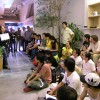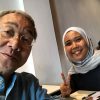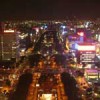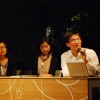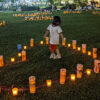Small Group Night Walk Review
2020.11.28 東悟子
An online review session was held to reflect on the “Small Group” night walk surveys conducted across seven locations in October and November. As members shared their observations and experiences, each report sparked curiosity and inspiration—many found themselves wanting to explore the places others had visited next.
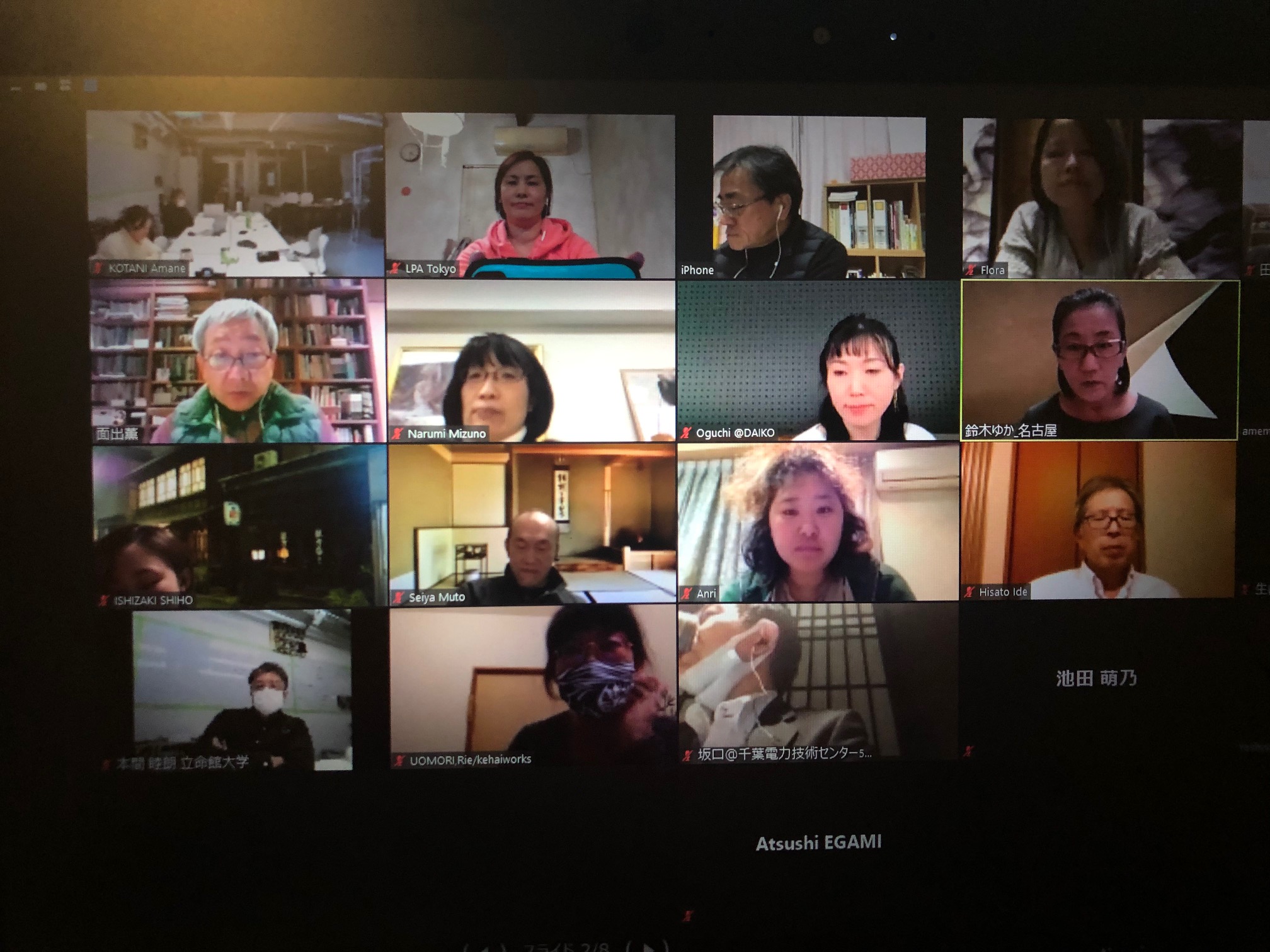 Participants joined from a variety of locations — their homes, workplaces, izakaya(Japanese style pubs), and even schools
Participants joined from a variety of locations — their homes, workplaces, izakaya(Japanese style pubs), and even schools
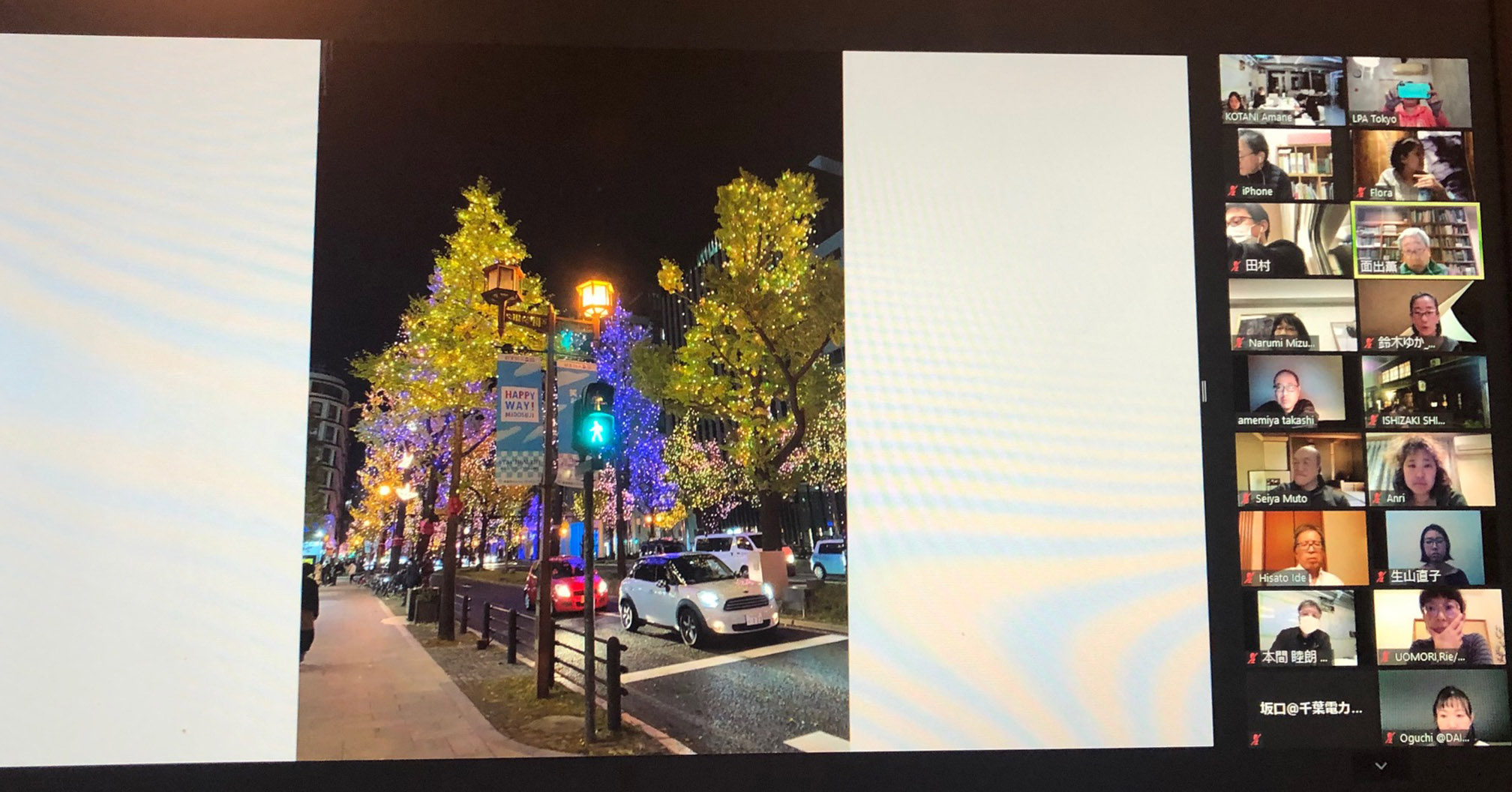 Each group leader gave a report on their night walk survey findings
Each group leader gave a report on their night walk survey findings
We held our fourth online salon of the year, focusing on a review of the night walk surveys conducted in small groups during October and November. Each area leader reported on their respective night walk survey. Typically, we divide into three to four groups to explore the same area and then present our findings. However, this time, the night walk surveys were conducted in completely different locations—including Nagoya, the Midosuji Illumination in Osaka, the Shibuya public restroom tour & Miyashita Park, Toyosu, Yanaka, Azabu-Juban, and Somei Cemetery & Sugamo. As a result, the reports were rich in variety, and the 90 minutes flew by.
In the report from Nagoya, which focused on streetlights, large and flamboyantly designed streetlights were introduced and praised as “heroes” for contributing to the vibrant, energetic atmosphere characteristic of the city. On the other hand, LED illuminations that cast an overwhelmingly blue hue over the surroundings were labeled as “villains.” The team in charge of the Midosuji Illumination in Osaka noted that while the use of various colors made the illuminations feel festive, they were not well received by some members who preferred warm, subdued lighting. Still, the space was described as dreamlike, and it was agreed that the overall mood of the town was successfully created. One issue raised was how to better integrate the existing streetlights with the illumination.
During the Shibuya restroom night walk survey, participants reported on newly designed public restrooms created by architects and designers. Each facility had a distinct concept and personality, and while opinions varied based on personal taste, there was unanimous agreement on the importance of increasing the number of clean and welcoming public restrooms. However, some raised the point that it may be necessary to reconsider the overall lighting environment of the parks in which these restrooms are located—not just the toilets themselves.
From the Toyosu team, it was noted that the jogging paths were lit with more than sufficient brightness, perhaps even excessively so. There was concern that the lighting might appear glaring when viewed from across the water. One especially memorable nightscape highlighted in the report was the lights from the Toyosu high-rise apartments. Their reflections on the water created a beautiful and striking night view.
The Yanaka team reported that rather than the shopping street itself, it was individual shops that were making the most effort with their lighting. The street as a whole showed a coexistence of both unity and inconsistency. As expected, security lights in the residential areas were labeled as villains.
A particularly chaotic intersection was highlighted, where an accumulation of added streetlights and security lights had created a sort of lighting traffic jam.
The Azabu-Juban team introduced an area where old and new coexist, creating a multicultural and diverse neighborhood. Various types of lighting were observed—some atmospheric, some stimulating, and others simply indifferent. The team concluded that with some thoughtful organization and a lighting plan that expresses the unique identity of the area as a whole, Azabu could become an even more charming nightscape.
The Somei Cemetery team did not frame their observations in terms of heroes or villains, but instead reported on the lighting environment of the cemetery, which also serves as a pedestrian thoroughfare. Situated on elevated ground with a good view, the cemetery felt nothing like the eerie or spooky place one might expect. In fact, it was brighter than anticipated, with more foot traffic than imagined, creating no sense of darkness or fear.
After visiting the cemetery, the team surveyed Sugamo. Though it is technically a shopping street, there were few dining options, and most shops were closed at night. As a result, the team felt that the lively atmosphere they had hoped for, contrasting with the somber cemetery, was unexpectedly absent.
Because the salon was held online, participants could join from home, allowing for night walk surveys in various parts of Japan and the sharing of diverse findings. This format seems to have opened up new possibilities for how the Lighting Detectives can carry out their activities moving forward. Even once large gatherings become feasible again, incorporating online elements and pursuing a hybrid model may well be the ideal “new normal.” We look forward to bringing you more engaging activities in the future! (Noriko Higashi)
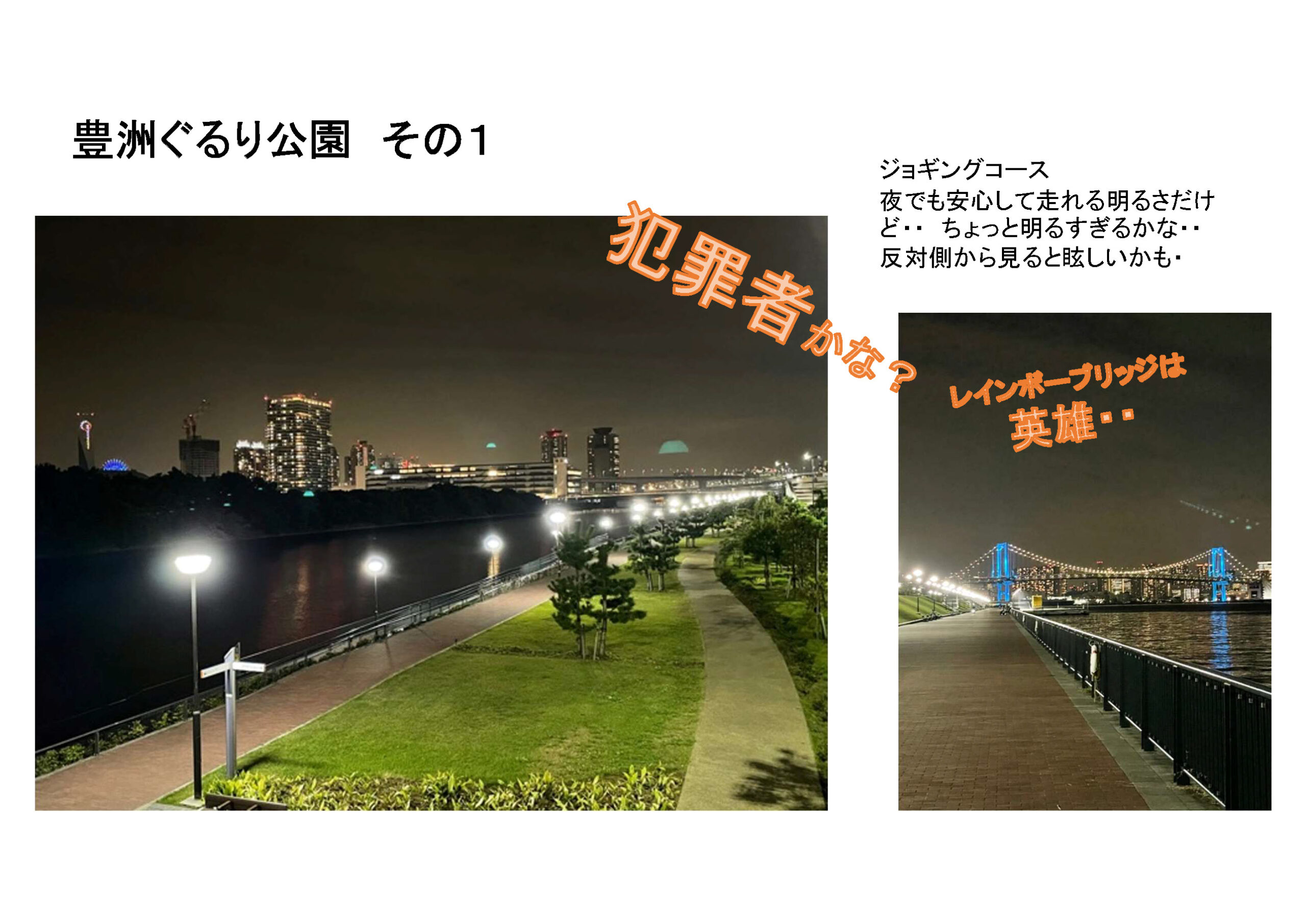 Presentation slides from the Toyosu team
Presentation slides from the Toyosu team
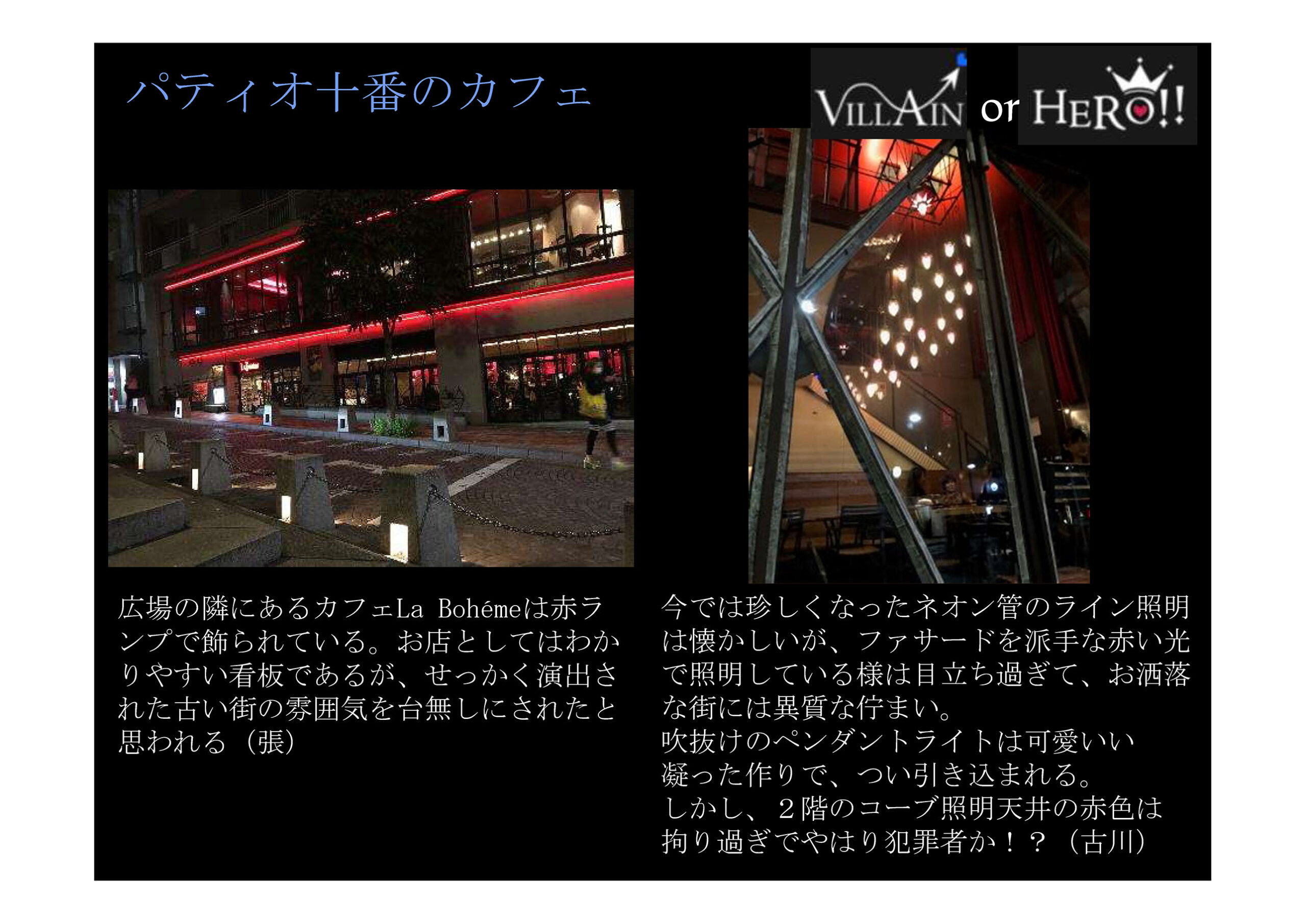 Presentation slides from the Azabu team
Presentation slides from the Azabu team





